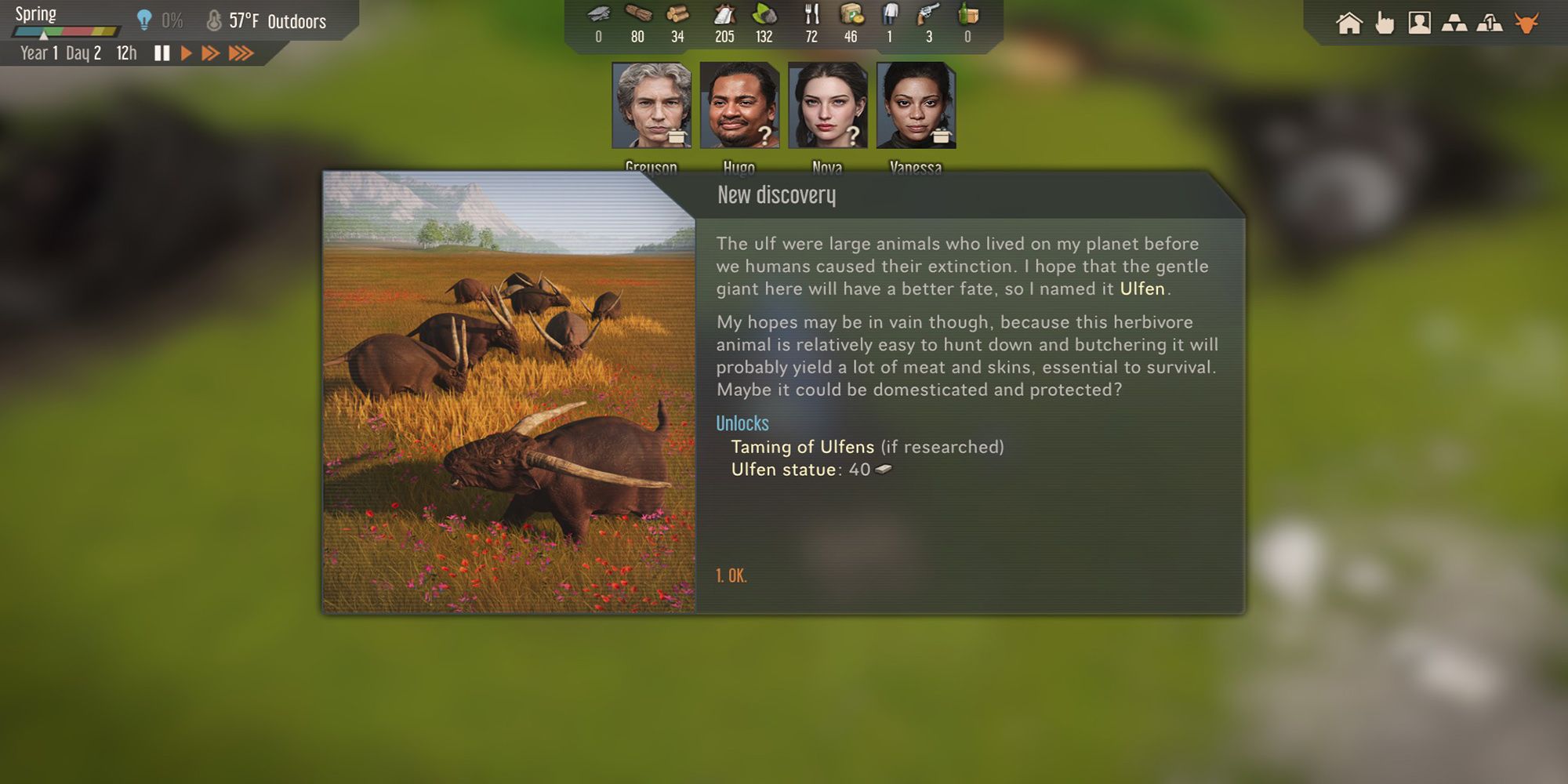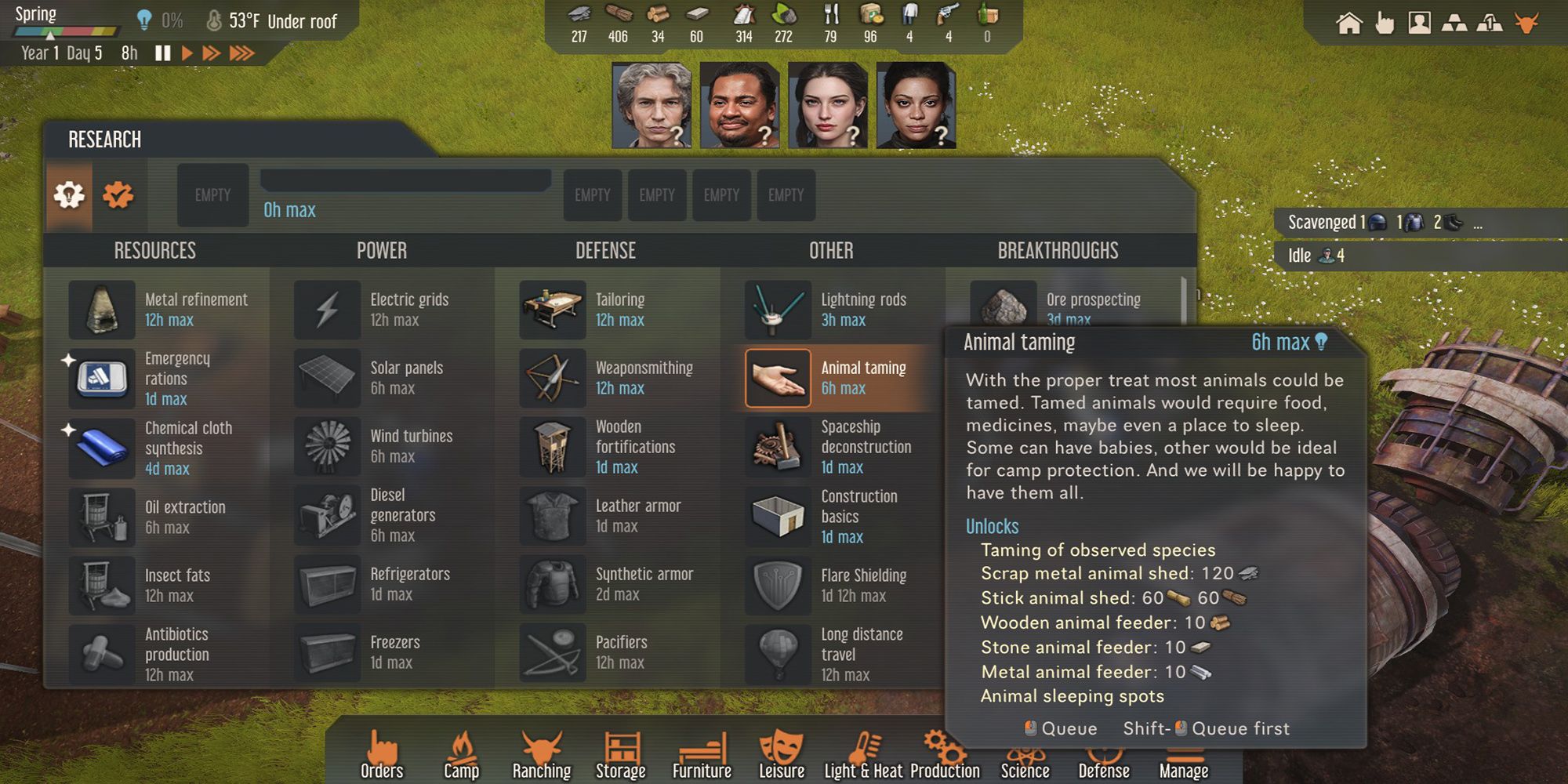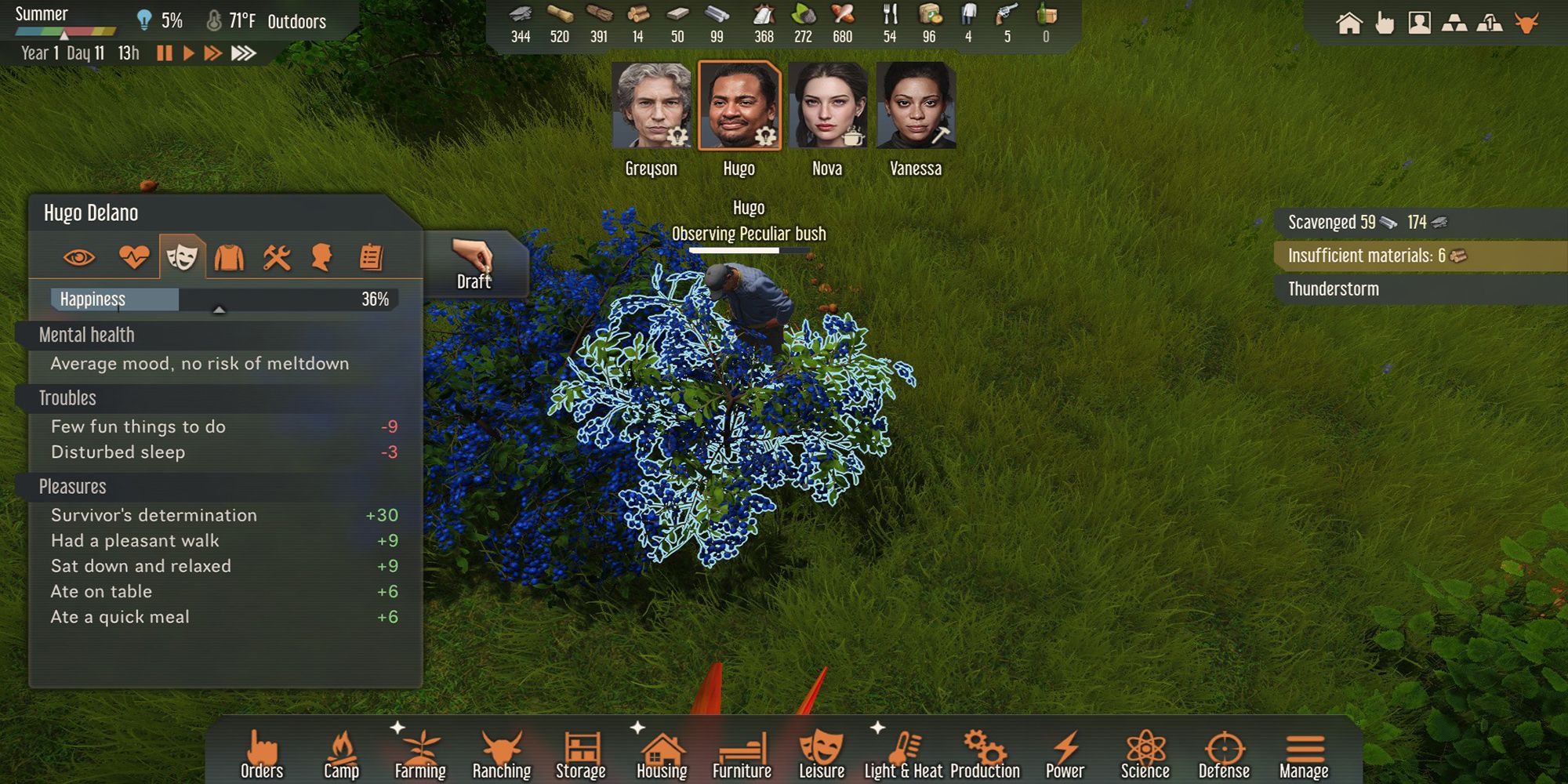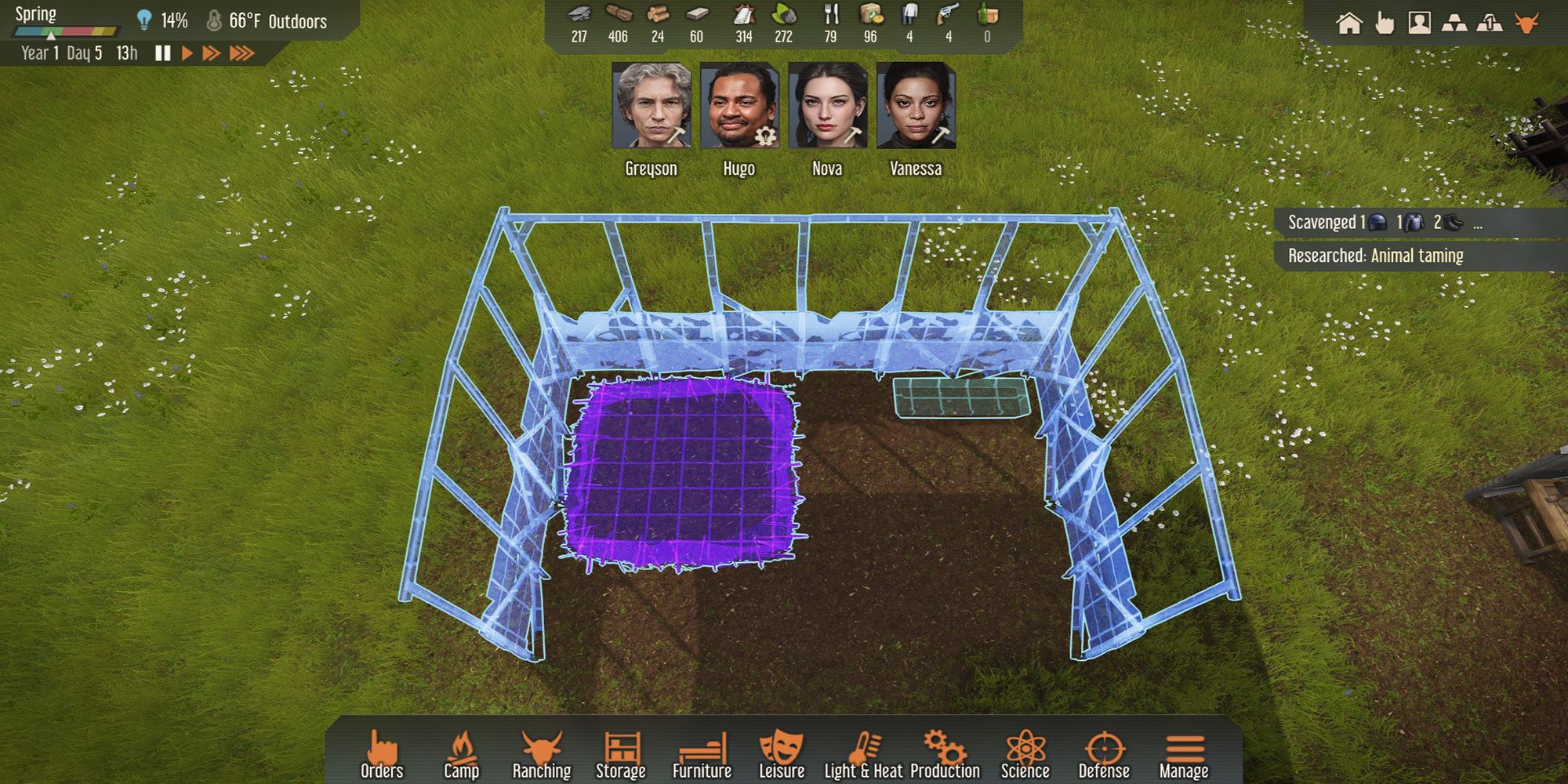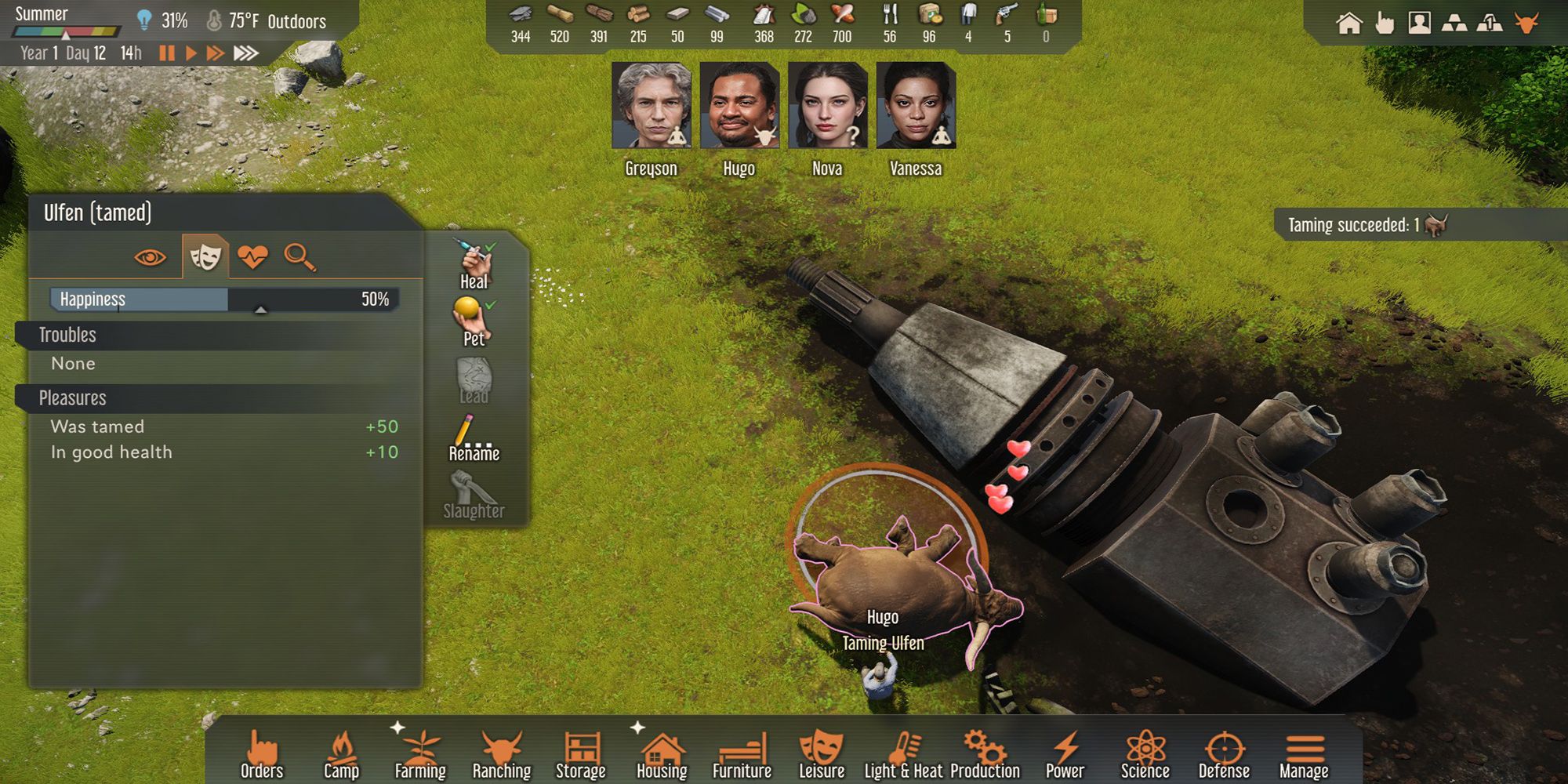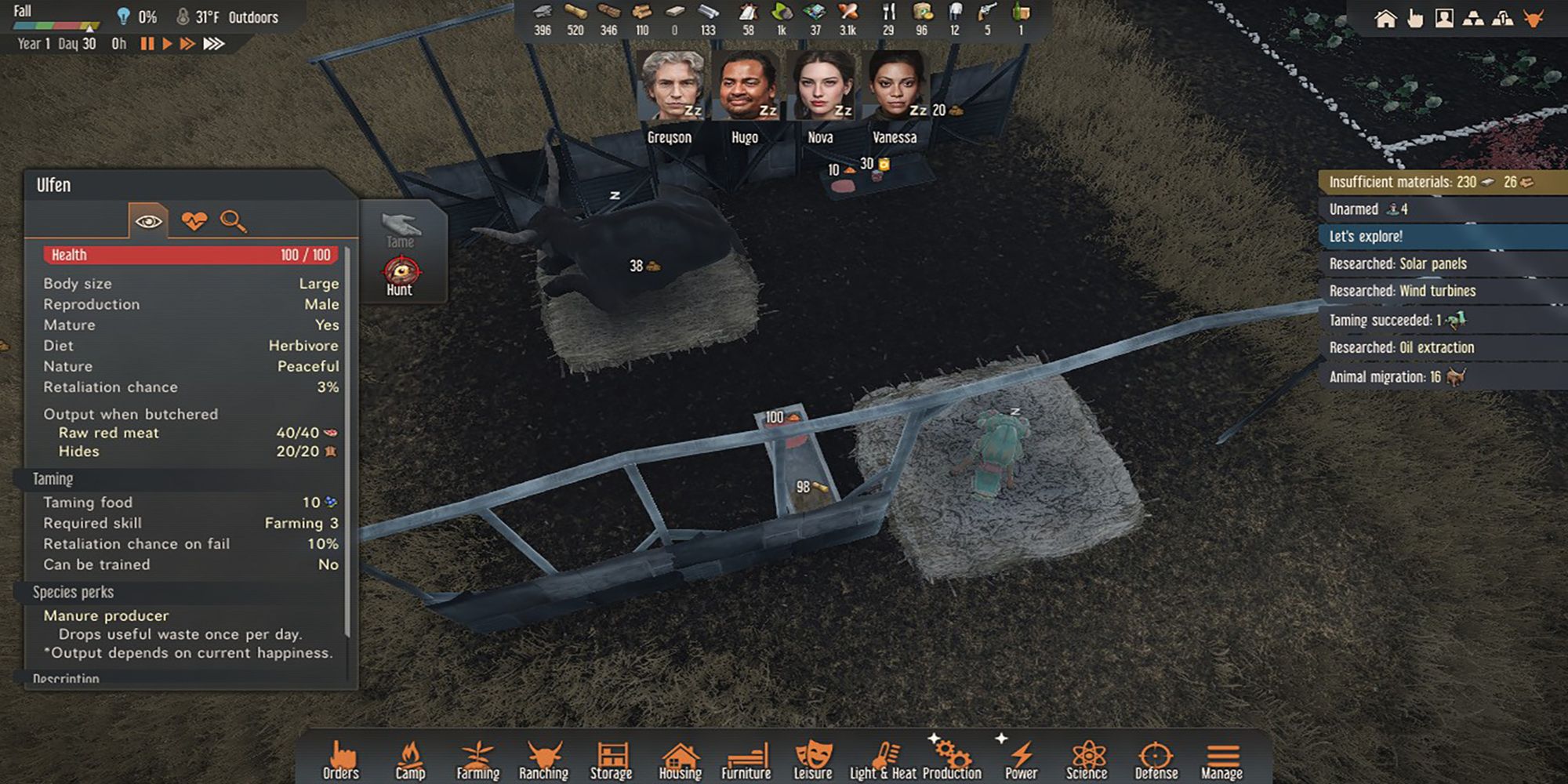Quick Links
- Step 1: Observe Wildlife
- Step 2: Research Animal Taming Tech
- Step 3: Discover Taming Food
- Step 4: Build An Animal Shelter
- Step 5: Tame The Animal
- Caring For Domesticated Wildlife
Stranded: Alien Dawn's latest expansion, "Train And Tame," adds a much-needed feature to deepen the survival experience: domesticated animals. Now you can tame animals, breed them to get slaughtered, house them as your pet, or train them to defend your camp.
Still, taming is a subtle skill that requires study, preparation, and patience. Furthermore, once you tame an animal, your crew will be responsible for its welfare. So, we laid out a step-by-step guide to taming along with a list of essential animal care responsibilities.
Stranded: Alien Dawn is an Early Access title still in development. Therefore, its current version does not represent the contents of the finished game. As a result, parts of this guide may become obsolete/inaccurate as the title grows and evolves. Additionally, bugs and glitches may inhibit gameplay.
Step 1: Observe Wildlife
Like most tasks regarding plant and animal life, the first step in domesticating an animal is observing it. Therefore, if your team hasn't researched the animal you wish to domesticate, recruit a skilled researcher to observe the animal in question.
When observing a new animal, ensure you avoid aggressive species. Shriekers (large red scorpions) and scarabei (giant beetles) are common predators to avoid. In any case, it's good to have a weapon on hand for emergencies.
When your survivor finishes their research, a dialog screen reveals the results. These results will provide a short blurb about the animal, what products they yield, and if they're tameable.
It's vital to note that each animal has different taming requirements, including a minimum Farming skill level and specific taming food.
Step 2: Research Animal Taming Tech
Once you've researched the animal you're interested in domesticating, you'll need to spend some time at the research desk. So, go to the Research Menu and add Animal Taming to your queue. You'll find it in the "Other" research path.
Animal taming is a simple skill requiring up to six hours of study max. Once your research is done, you'll know everything you need to build the facilities necessary to provide your animal with a happy home.
Step 3: Discover Taming Food
In Stranded, taming an animal primarily consists of coaxing a wild animal with its favorite food to win its affection and loyalty. So you must observe and discover this food before the option to tame it becomes available.
Thankfully, if you click on the animal you're interested in and scroll through its stats, you'll find a small picture of its taming food. Use this information to scroll through the area and find the correct foliage. Then, send an observer to study the plant species.
In our experience, the fruit required to tame our Ulfen (think Bull meets Rhino) was far from our camp. So you must send a survivor with adequate combat skills to take on this task in case of a hostile attack.
After you discover the proper taming food, harvest the sample specimen to keep handy at your camp. We also recommend dedicating a farm plot to this food. If you're lucky, the taming food may be edible to human and alien life. That's a double win!
Step 4: Build An Animal Shelter
You wouldn't adopt a pet without having a bed ready for them at home. In turn, you must prepare a shelter for your domesticated animal before taming it. When caring for your first domesticated animal, you must construct the following:
|
Materials Required |
||||
|---|---|---|---|---|
|
Animal Shed |
Scrap Metal Animal Shed:
|
Stick Animal Shed:
|
||
|
Animal Feeder |
Wooden Animal Feeder:
|
Stone Animal Feeder:
|
Metal Animal Feeder
|
|
|
Animal Sleeping Spot |
No Materials Required |
|||
One more thought: guarantee enough food to feed your animal once it's tamed. After all, the last thing you want is to scramble for resources because you weren't prepared for a new mouth to feed!
Step 5: Tame The Animal
So, you observed an animal, researched taming technology, discovered the proper taming food, and built an animal shelter; what's left? Taming, of course!
This moment is when the magic happens. But the process is not a sure thing. You may go through some trial and error before successfully taming your target. So, it would be best if you stay prepared for the worst.
In most cases, an unsuccessful taming attempt will result in the animal fleeing. However, it's also possible for the animal to become hostile. Therefore, we recommend taming less confrontational animals first. For instance, the Ulfen is a gentle giant more likely to flee than attack, thus making it a great animal to tame. Finally, as always, make sure your tamer is armed.
When the taming attempt is successful, you'll see heart emojis emerge from your target. (In our case, the Ulfen rolled on its back in glee. It was adorable!) From this point, you can task a survivor with leading the animal to its new living quarters.
Suppose you're taming a defensive animal that's prone to hostility. In that case, we recommend equipping your tamer with the pacifier weapon. These bows tranquilize animals, so they're less likely to fight back.
First, research pacifiers at the research desk. Once finished, you can craft a pacifier on the workbench. Pacifiers require ten wood, ten metal alloy, and two healing balms to craft.
Caring For Domesticated Wildlife
Taming a wild animal is only half the job. You're also responsible for keeping your newly domesticated animal happy and healthy. Here are essential responsibilities you should track:
Feeding
Domesticated animals need to eat at least once a day. They prefer to eat from a dedicated animal feeder. Your crew should maintain the animal feeder automatically as long as they are not restricted from mundane handling activities.
More crucial is always having raw food handy to keep the feeder stocked. A starving animal is hazardous. When ravenously hungry and underfed, a domesticated animal will feed on crops, stored food, and even corpses. Or worse, the animal will berserk and damage your camp or crewmates.
You can check on your animal's satiation via their Fattening gauge. This meter grows each consecutive day the animal gets adequately fed. The higher the meter, the more meat they'll produce when slaughtered.
Healing
Your domesticated animal can require medical attention as any human would. Therefore, it's essential to keep medicine and bandages handy. An experienced healer is an additional bonus.
Bonding
Deciding to bond with an animal is dicey. On the one hand, animal interactions offer quick Happiness boosts to your survivors. Once the survivor has bonded with said animal, they gain a permanent Happiness boost. But, unfortunately, on the other hand, that permanent boost drops when a human's bonded animal passes away.
In short, we recommend this golden rule: don't pet the animals you plan to slaughter, and don't slaughter the animals you plan to pet.
You can check an animal's bonding status via the Taming section of their stat overview. These metrics include the animal's bonding chance and how many survivors the animal bonded with.
Training
Some species are suitable for training. This is useful when you wish to keep animals handy for protecting the camp. A domesticated animal's stat overview will indicate whether or not they are suitable for training in the Taming section.
Additionally, to continue training an animal, the survivor's Feeding skill level must rank higher than the animal's training level.
Reproduction
Some animals are capable of reproduction. In this case, housing a male and female in the same enclosure will lead to pregnancy. However, some animals have mating rituals that are too complicated to replicate for breeding. In this case, the animal's info panel will list them as infertile.
Setting Restrictions
The key to managing all these activities is the Tamed Animals menu. You'll find it via the Manage tab on the bottom toolbar. This chart lists each of your tamed animals, their health, Happiness, combat level, and checkboxes for several activities. All you need to do is check the boxes for activities you permit your survivors to do with each animal.
For example, if you wish to keep an animal as a pet, check the Heal and Pet boxes but keep the Slaughter box unchecked. If you wish to keep an animal for defense, with the possibility of slaughter down the line, only check the Heal, Train, and Slaughter boxes for that animal.
Source: Read Full Article
